Last updated: September 25, 2019
Article
Martin Itjen Curiosities
Itjen Begins His Legacy
During the 1910s through the 1930s, tourism began streaming into the Alaskan coast. More and more tourists replaced gold seekers, making the journey to see the natural beauty. Martin Itjen greeted the town's visitors down by the marina offering a guided town tour complete with his personal accounts of the Days of '98. His love of the automobile and the tourist industry evolved together to form the Skagway Streetcar Company. He developed a narrated tour that kept stories of the Grand Adventures of the Gold Rush alive. In doing so, Itjen created an abundant amount of unique artifacts that have become a part of Klondike Gold Rush National Historical Park.All of the artifacts highligted in this article are part of the National Park Service, Klondike Gold Rush National Historical Park, George and Edna Rapuzzi Collection. Gift of the Rasmusson Foundation.
Curious Canines
In the case of the taxidermy mounts at Klondike Gold Rush National Historical Park, a man by the name of Percy Colton is thought to have prepared the specimens for the Jeff Smiths Parlor Museum. An important component of art conservation involves historical research of an artwork or artifact. The identification of maker’s marks, signatures, or even the recognition of a similar hand, or “fingerprint,” in a series of artworks can provide crucial information about the artist, time period, and the materials used during fabrication. These two specimens consist of a grey wolf mount and a Husky dog mount. During the conservation treatment of these specimens, the park has been examining and taking note of both the similarities and differences in the animals’ construction and mounting systems. After spending hours carefully surface cleaning the animals inch by inch, it was revealed that both the dog and wolf musculature and body structures were prepared in very similar manners.
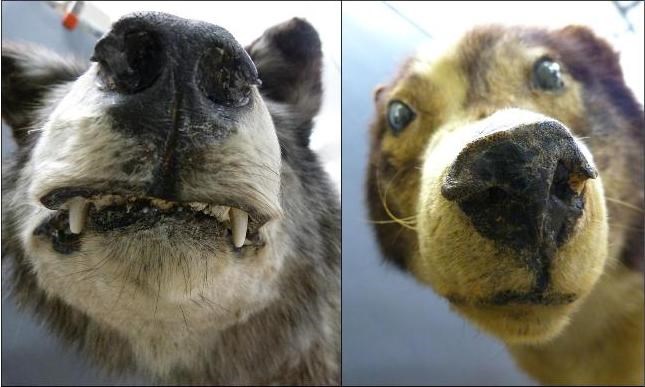
NPS. Artifact: (left) KLGO 57695 (right) KLGO 57693
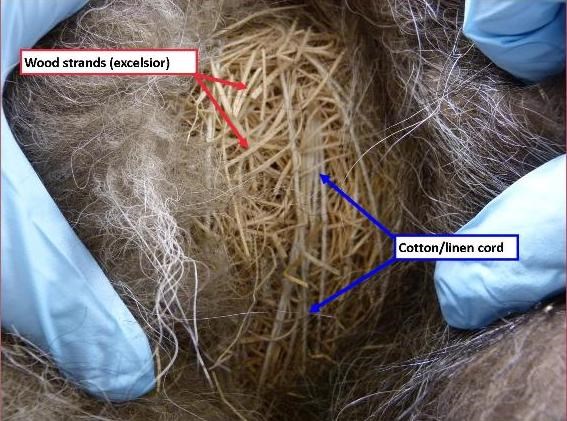
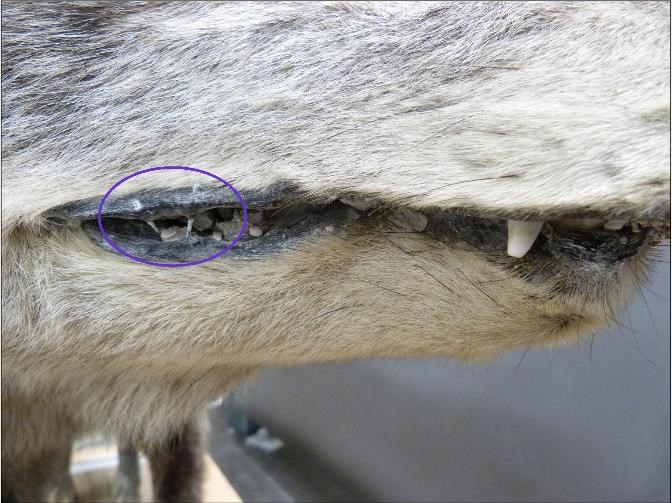
Moose Mounts
These two specimens are thought to have been prepared by local taxidermist Percy Colton in the 1930s. Itjen included the two moose in his diorama exhibit inside Jeffs Smiths Parlor, in addition to all of the other taxidermy specimens that the park has treated. Transporting the moose from their off-site location to their new downtown home in the fall of 2012 was no simple feat. Relocating the moose was necessary in order for the specimens to be better protected against pest infestation and potential exposure to moisture. The new space also provided ample room and amenities for conservation work to be completed on the specimens. The relocation efforts were made possible by the maintenance division, who loaded, transported, and safely unpacked the unwieldy taxidermy mount into its temporary home in the Meyer Building.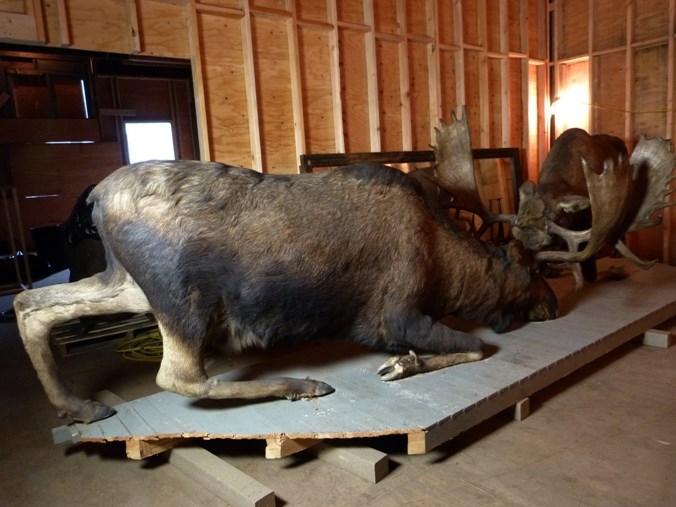
NPS. Artifact: KLGO 57690
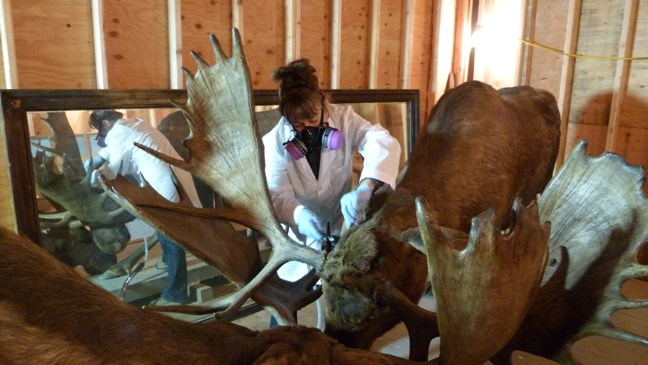
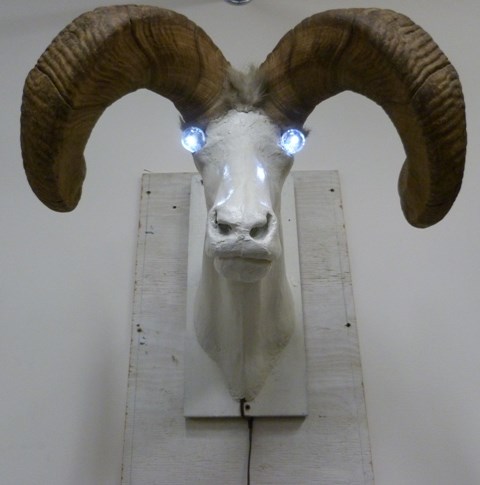
NPS. Artifact: KLGO 57752
Ram's Head
Additionally, Itjen wired an interior electrical system whose original function was to illuminate the two filament bulbs inserted into the eye sockets of the cast animal's head that we call "the Ram's Head." The treatment for this artwork was relatively straight-forward, however, the decision-making behind recreating the illuminated filament bulbs was not a linear process. Ultimately, it was decided that having the bulbs lit was a very important element of the Ram's Head; one that was essential to the artwork's identity and to the artist's original intent. With help from the park's own Scott Logan, a custom LED light system was fabricated and installed onto the mixed media animal mount so that it once again has those glowing (and somewhat creepy) illuminated eyes.
NPS. Artifact: KLGO 55043
Lady Lou
Lady Lou was definitely a lady of mystery. Her treatment involved some minor fills, in-painting, and surface cleaning; but the procedure that really initiated some interesting discussion concerning conservation ethics was whether or not to remove all of her textiles. On one hand, keeping the original garments would be preserving as much historical context as possible. On the other hand, the textiles were in very poor condition and were badly stained and contained substantial silk shattering. n the end, the park's curator Samantha Richert asked us to remove the garments so that they could be kept safe inside an archival storage box. Her decision was based on recommendations provided by Alaska State Museum conservator Scott Carrlee, Katie and myself concluding that if these tattered garments were to remain on the mannequin their preservation would ultimately be jeopardized by their extremely unstable state. Not to mention that Lady Lou's torso is made from car tires; a petroleum-based product that would continue to off-gas and stain her original garments. Katie's sewing and textile experience really came in handy and she whipped up a great Marvelseal vest for Lady Lou to wear so that the off-gassing could be minimized on the reproduction garments that will be installed.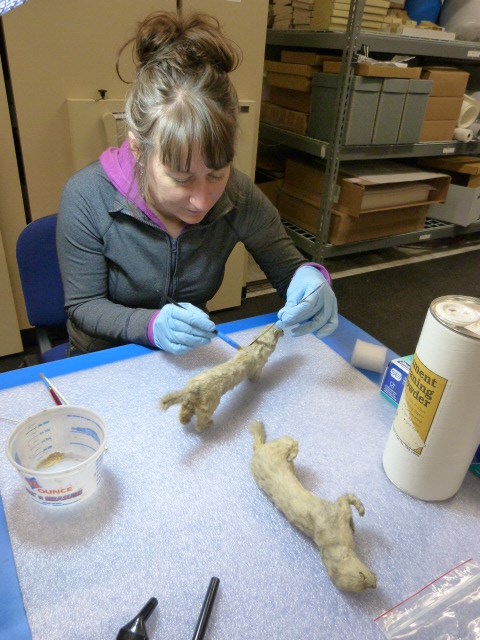
Taxidermied Ermines
Amongst the diverse fauna included in Itjen's collection are two winter ermine taxidermy mounts. These are not taxidermy specimens in the traditional sense, like the mounts used for biological study and display in natural history museums. The ermines, which are believed to have been prepared by local taxidermist Percy Colton in the 1930s, are curious little creatures with animated facial features and odd glass eye inserts. Their homemade construction and peculiar physiology is indicative of Itjen's preference for the sometimes odd and unusual. The interesting thing about the taxidermy specimens in Itjen's diorama is that their presence was more than just display for biological study. His selection of animals told a story: specifically, an Alaskan story that embraced the wonder and wildness of his adopted hometown, Skagway.
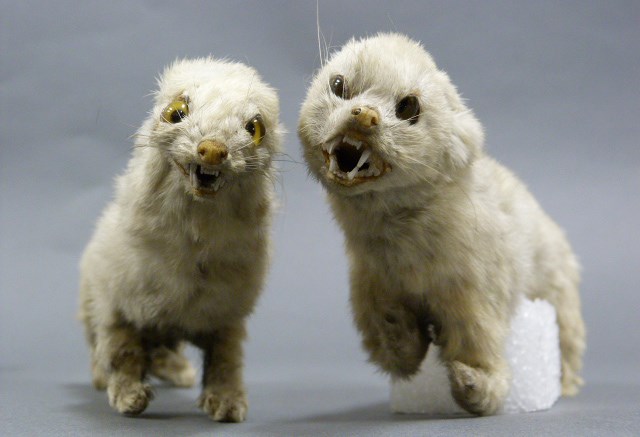
NPS. Artifact: (left) KLGO 57700 (right) KLGO 57701
